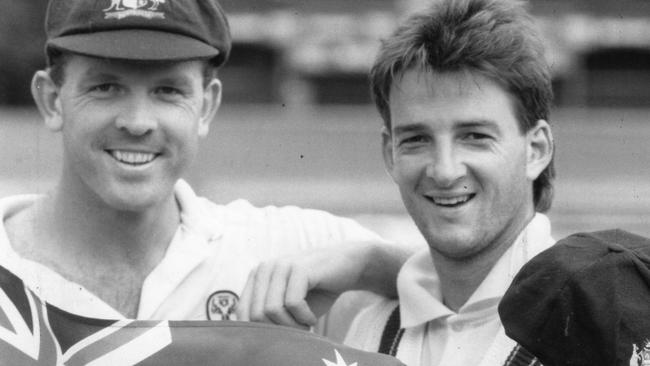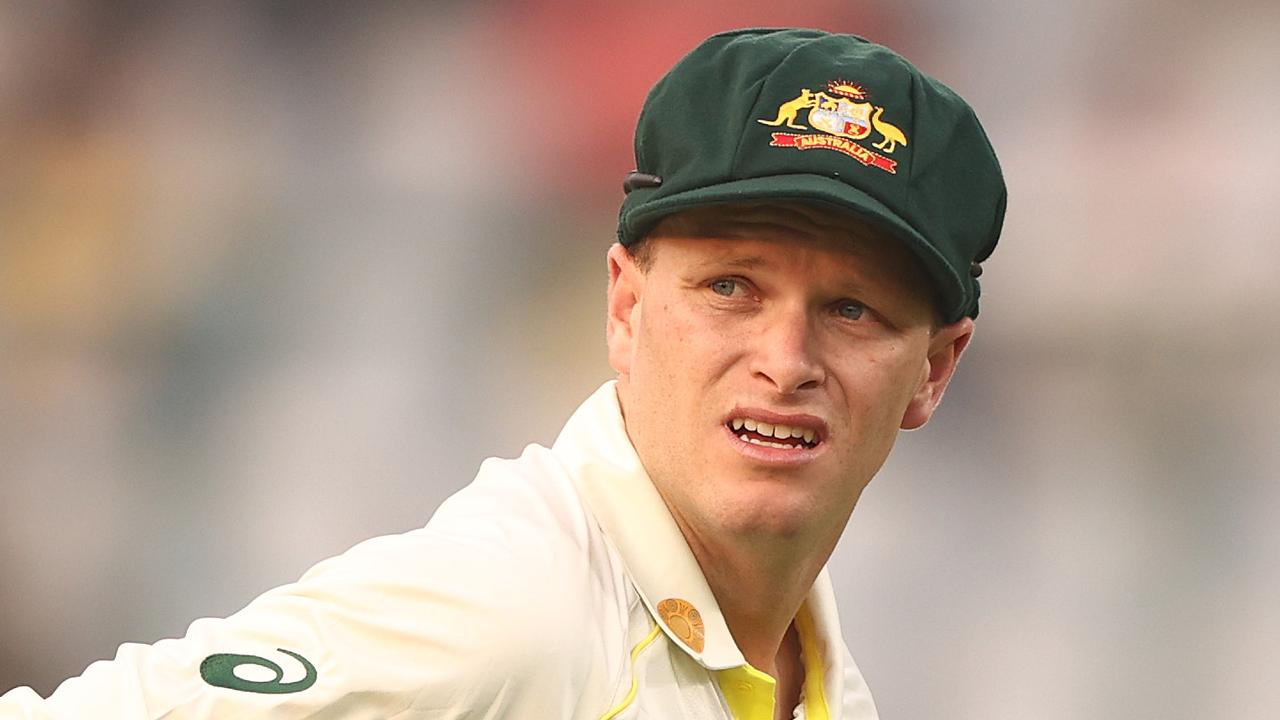Craig McDermott’s Hall of Fame induction just reward for enduring success in hard yakka era
Good players in tough eras rarely get the recognition they are due. But justice has been done with Craig McDermott, the Queensland quick who won Australia its first World Cup, inducted in to cricket’s Hall of Fame.

Cricket
Don't miss out on the headlines from Cricket. Followed categories will be added to My News.
Viv Richards’ mighty West Indian side had a strange, not-so-subtle way of letting Craig McDermott know they rated him.
Sensing quite rightly he was a dangerous foe hitting his prime, they ruthlessly busted his cheek bone, finger and toe on the 1991 Caribbean tour and peppered him with vicious personal sledges.
McDermott was seen as a key threat to a proud West Indies dynasty which was just starting to wane and wobble.
Watch LIVE coverage of the best international & domestic cricket on KAYO with FOX CRICKET’s unmatched commentary line-up. New to Kayo? Get your 14-day free trial & start streaming instantly >
Somehow he got through it to take 24 wickets at 23 and be the outstanding bowler of the series, yet because Australia lost it 2-1 it is an effort which tends to vanish in the mist of time, as did too much of McDermott’s best work for Australia.

For this reason alone there is a sense that justice will be done when McDermott on Monday night is inducted into Australian cricket’s Hall of Fame in Melbourne.
Good players in tough eras rarely get the recognition they deserve.
Twenty four years into retirement McDermott, the former exceptional Queensland fast bowler with the steam train run-up who could swing the ball at hot pace, will get his just deserts.
“They were trying to kill me every time I went out to bat,’’ McDermott said nonchalantly of the ‘91 series.
“I broke those bones but it was not too bad. Viv used to give it to me full on. He called me a coward ... that is all part and parcel of it. You just move on’’.
So did he feel underrated?

“I took 291 Test wickets and whatever else so I think it was a pretty decent career. Maybe my profile is not that high but I just finished the game and got on with life.
“It’s a great honour to be in the Hall of Fame with a truckload of players who did well for their country’’.

McDermott’s career was quite turbulent from the moment he played his first Test against the West Indies as a flame-haired 19-year-old in 1984 and had times when he lost his way as he grew from a boy to a man under the shade of a baggy green cap.
He was a key link man in the hard yakka era between the Dennis Lillee and Glenn McGrath, one which eventually rose above being sabotaged by an Australian rebel tour of South Africa but he played in a system far less nurturing than today’s.
“It certainly was a lot harder then than now. When I played my first Test we did not even have a coach.
“The captain hit slips catches. It is not a sore point. It was just a different era. I remember in the 2015 World Cup we had more support staff than we had players. It has changed and that’s good.

“We didn’t really have one (a father figure). I played with Thommo (Jeff Thomson) for Queensland and he was tremendous. Greg Chappell was my first state captain and a good mentor. But in those first few years of Test cricket there was not a lot of guidance going around from my point of view.

“You suffer from that too. I went to the 1987 World Cup and took most wickets in a World Cup, came home and got fat and got dropped. I learnt from that 18 months out of the team and came back and was rated in the top couple of bowlers in the world for the next six to seven years’’.
McDermott’s career had many big moments including his tournament high 18 wickets in Australia’s shock 1987 World Cup win, his 30 wicket Ashes series in 1985 when he led an undermanned attack in his second series, his 8-97 against England in Perth in 1991 and 32 wickets against England in his favourite series in 1994-95.
Among his most captured Test wickets were great openers Graham Gooch (10 times), Desmond Haynes (nine) and Gordon Greenidge (seven) which said a lot about the quality of his 145kph outswinger in an era when Australia had not truly discovered reverse swing.

But his career was also laced with drama such as the 1993 Ashes Test at Lord’s when he was rushed to hospital with a twisted bowel.
“The doctor said had that burst I would have died. I lost nine inches of my large intestine to gangrene. Had I been in Australia I could have had two hours left to live’’.
After retiring he became a well respected fast bowling coach who preached a “pitch it up mantra’’ with his crowning success being a plan hatched to dismiss New Zealand captain Brendon McCullum who was yorked third ball by Mitchell Starc in the 2015 World Cup final.
“That ball won us the World Cup. That did not have a Plan B. That was my most satisfying moment as a coach because Starcy and I talked about it for weeks before.
“We did not discuss it with anyone else until we told Michael Clarke and when Starcy got the wicket third ball I jumped up out of my seat in the dressing room. It just felt so good’’.


